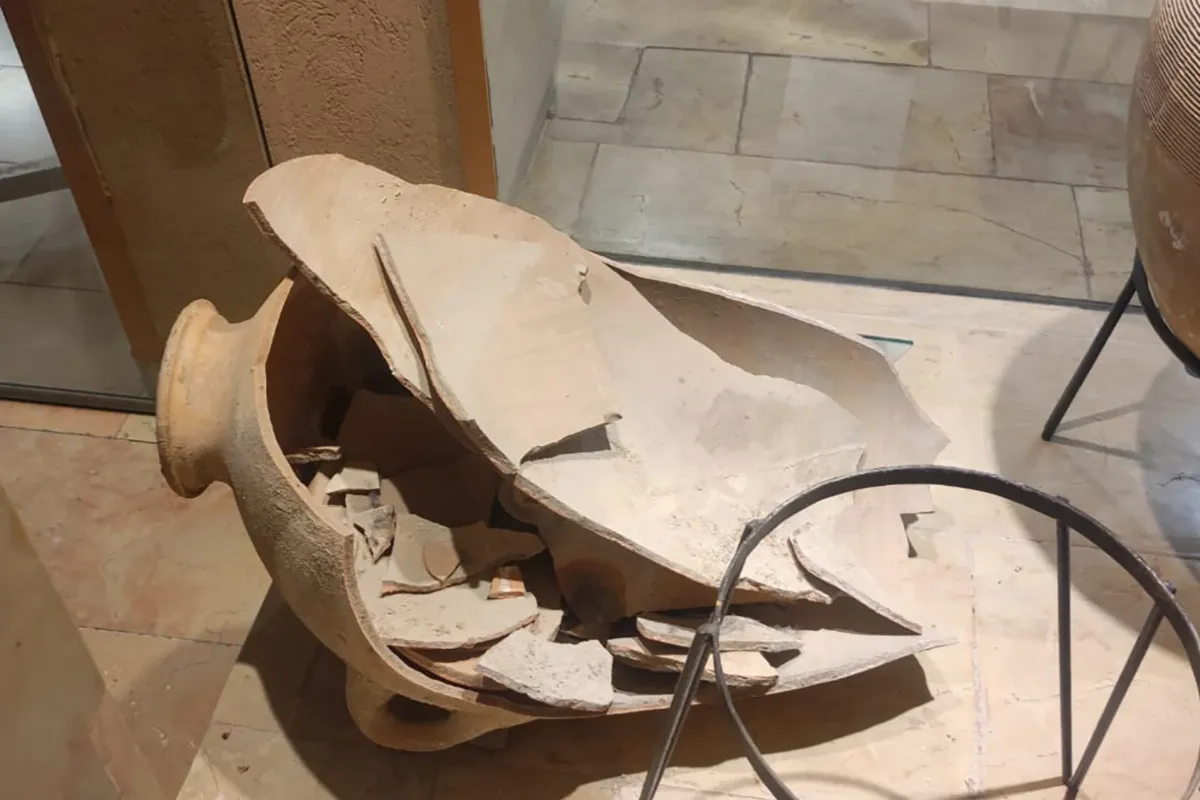
4-Year-Old Accidentally Shatters 3,500-Year-Old Bronze Age Jar at Israeli Museum
A 4-year-old boy unintentionally shattered a 3,500-year-old Bronze Age jar at the Hecht Museum in Haifa, Israel, in an incident that has sparked discussions about the balance between accessibility and preservation in museums. The ancient artifact, an intact jar believed to have been used for storing and transporting liquids like wine or olive oil, was on display without a protective glass case near the museum’s entrance when the accident occurred.
The boy, curious about the contents of the jar, pulled it slightly during a visit with his parents last Friday. The jar fell and broke into pieces, leaving the boy's father in shock. "I thought it wasn’t my child that did it," he told the BBC, still grappling with the unexpected incident.
The Hecht Museum, known for its philosophy of allowing visitors to experience artifacts up close, defended its decision to display the jar without a protective barrier. In a statement to CNN, the museum emphasized its commitment to making history accessible, reflecting the vision of its founder, Reuben Hecht. “The museum believes there is a special charm in experiencing an archaeological find without any obstructions,” the statement read, indicating that the tradition would continue despite the mishap.
The jar, which dates from between 2200 BC and 1500 BC, predates the reigns of King David and King Solomon in ancient Israel and Judah. Its intact condition made it an impressive find, as most similar vessels uncovered by archaeologists are typically broken or incomplete.
In response to the incident, Inbal Rivlin, the museum’s head, invited the boy and his mother back to the museum for a private tour. “The museum is not a mausoleum but a living place, open to families and accessible,” Rivlin told Israeli news outlet Ynet. She reassured parents that “things like this happen” and urged them not to fear bringing their children to the museum. New signs have since been printed to indicate which items can or cannot be touched.
Opened in 1984 on the grounds of the University of Haifa, the Hecht Museum houses archaeological discoveries dating back to the Chalcolithic period, around 4500 BC to 3500 BC. Despite the damage, the museum has approached a restoration expert to repair the jar, using photographs for reference. The artifact is expected to be returned to its display soon, with the restoration process serving as an educational opportunity for visitors.
The boy’s father expressed his regret over the incident, lamenting that the jar “will no longer be the same item.” Nevertheless, the museum’s efforts to restore the artifact ensure that its historical significance will endure, even with the new chapter added by the curiosity of a young child.
This incident underscores the ongoing challenge museums face in preserving history while making it accessible to all, including the youngest visitors.
Stichworte







